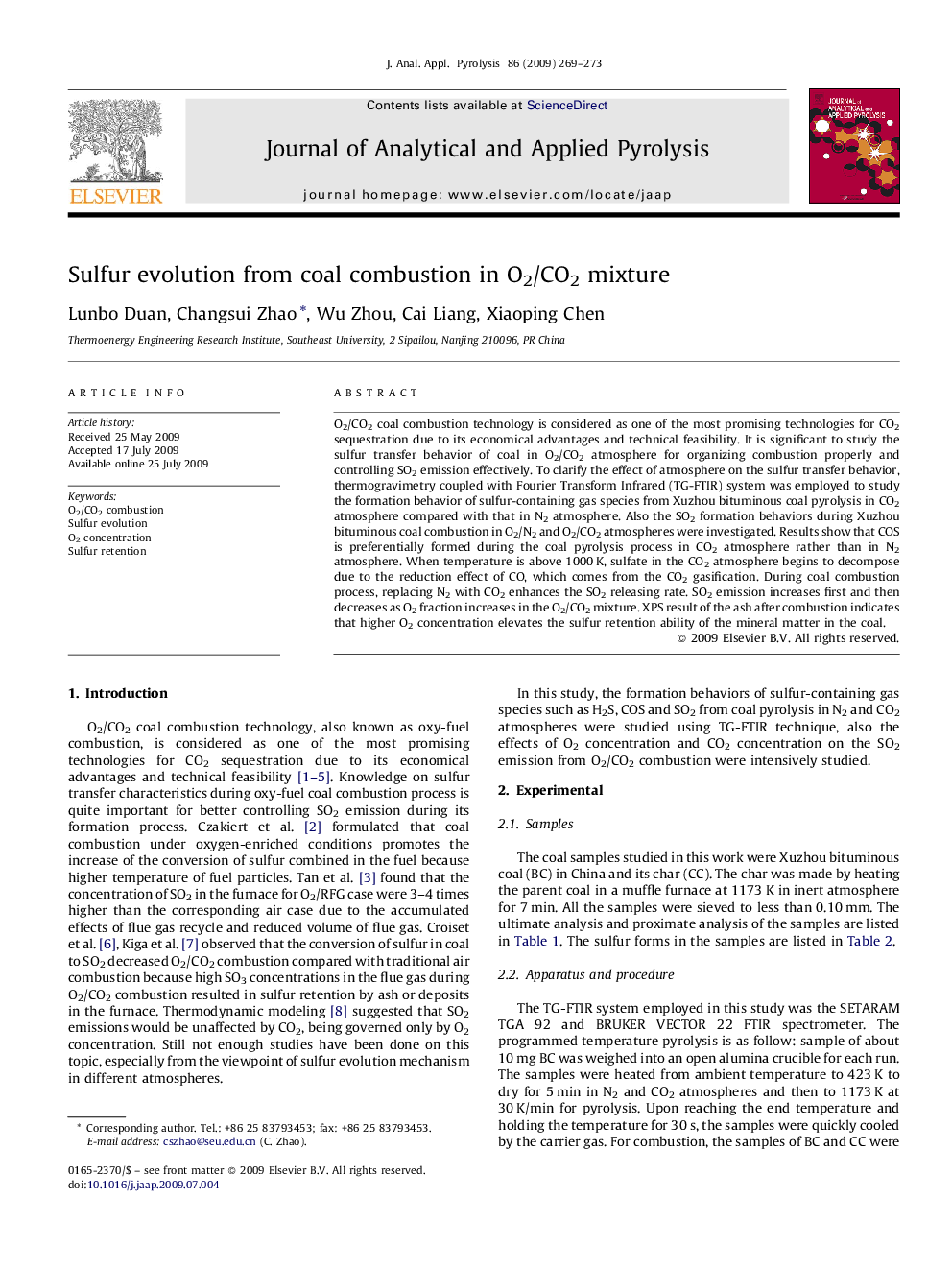| Article ID | Journal | Published Year | Pages | File Type |
|---|---|---|---|---|
| 1197352 | Journal of Analytical and Applied Pyrolysis | 2009 | 5 Pages |
O2/CO2 coal combustion technology is considered as one of the most promising technologies for CO2 sequestration due to its economical advantages and technical feasibility. It is significant to study the sulfur transfer behavior of coal in O2/CO2 atmosphere for organizing combustion properly and controlling SO2 emission effectively. To clarify the effect of atmosphere on the sulfur transfer behavior, thermogravimetry coupled with Fourier Transform Infrared (TG-FTIR) system was employed to study the formation behavior of sulfur-containing gas species from Xuzhou bituminous coal pyrolysis in CO2 atmosphere compared with that in N2 atmosphere. Also the SO2 formation behaviors during Xuzhou bituminous coal combustion in O2/N2 and O2/CO2 atmospheres were investigated. Results show that COS is preferentially formed during the coal pyrolysis process in CO2 atmosphere rather than in N2 atmosphere. When temperature is above 1000 K, sulfate in the CO2 atmosphere begins to decompose due to the reduction effect of CO, which comes from the CO2 gasification. During coal combustion process, replacing N2 with CO2 enhances the SO2 releasing rate. SO2 emission increases first and then decreases as O2 fraction increases in the O2/CO2 mixture. XPS result of the ash after combustion indicates that higher O2 concentration elevates the sulfur retention ability of the mineral matter in the coal.
